Rachmaninov's Symphonic Dances: a guide to the best recordings
Rob Cowan
Monday, April 29, 2019
Rachmaninov’s final orchestral work recalls the sounds of Old Russia from the vantage point of the composer’s American exile. Rob Cowan assesses the available recordings
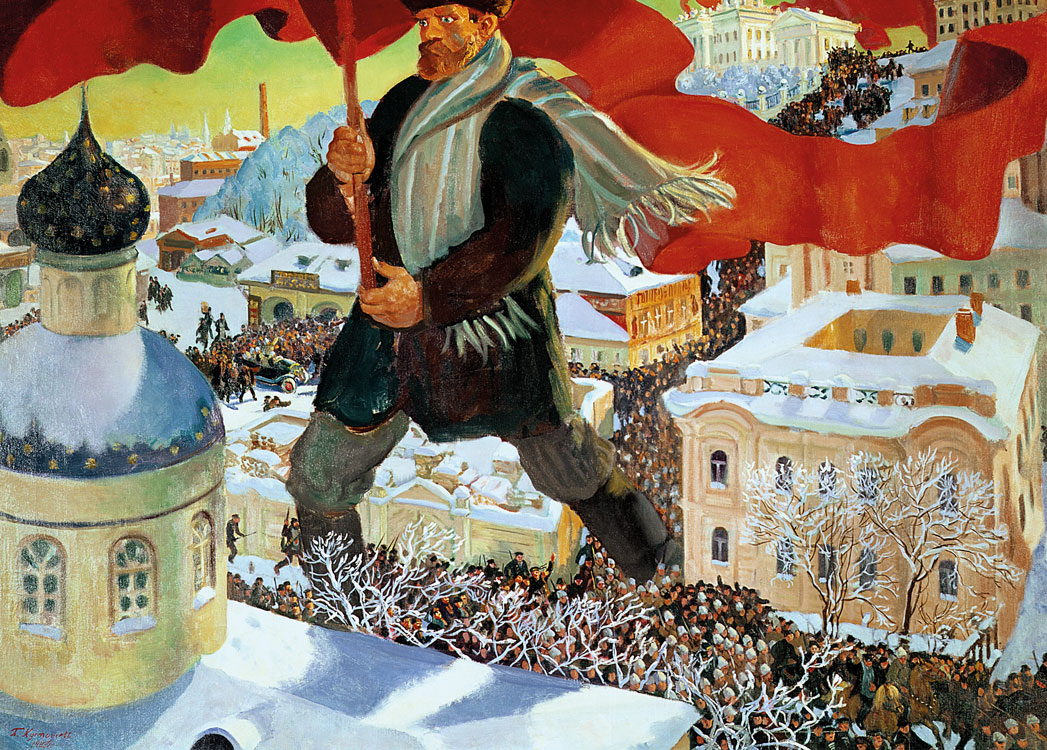
‘In my beginning is my end.’ TS Eliot’s haunting words at the start of ‘East Coker’ (the second of his Four Quartets) remind me that the first of these Symphonic Dances, Rachmaninov’s last and perhaps greatest work, lovingly quotes his First Symphony, which failed at its premiere, an allusion that at the time – 1941 – would have been known to very few. The wider public had to wait a good few years before the symphony was revealed in all its youthful glory and we could knowingly glance back at this later work with a sigh of recognition: ‘so that’s where the sense of longing comes from’. By coincidence, Eliot’s poem and Rachmaninov’s Dances were completed in the same year. But the time travel element doesn’t end there.
The Dances simultaneously inhabit the ‘old’ and ‘new’ worlds, being ‘Old Russian’ to the core but with a filmic element that unmistakably reflects its place of birth. Furthermore, Rachmaninov uses an alto saxophone, a rare occurrence with Russians at the time excepting Glazunov, who as it happened had conducted the disastrous premiere of Rachmaninov’s First Symphony and who wrote a Saxophone Concerto and a Saxophone Quartet, both works, like the Dances, tinged with melancholy.
The Symphonic Dances was the only major work that Rachmaninov composed entirely in America. When Michael Stewart wrote his excellent Gramophone Collection survey of recordings back in July 1994 the roll call of versions, piano and orchestral, was far less than is available now for orchestra alone, which is why I’m restricting myself only to orchestral options – and even then only to a judicious selection. Otherwise I’d barely have space for gnomic references, if that. Besides, there’s now one recently released historic game-changer that alters the way we hear the work; but more about that below.
First arrivals
Rachmaninov dedicated the Dances to the Philadelphia Orchestra and its conductor at the time, Eugene Ormandy, who gave the premiere. We’re told that Ormandy didn’t take to the work and that Rachmaninov wasn’t too keen on the way he performed it. Dimitri Mitropoulos caught his ear more favourably and, thanks to Ward Marston, we now have access to Mitropoulos’s 1942 New York Philharmonic Symphony broadcast, hitherto unpublished and – in the absence of the premiere performance – the earliest complete recording of the work to have come down to us.
The context of its release is a fascinating set in which also we hear the composer himself demonstrating a large proportion of his then fresh-minted masterpiece on the piano (all three dances are represented), with Ormandy listening close by. What we learn is of immense value: that the opening pages should be kept steady, for example, and that the tempo rubato marking over the opening of the darkly waltzing second movement should be just that, elastic in its phrasing.
Mitropoulos’s performance is muscular and forceful, though the expressive centre of the first dance soars, the New York strings the equal of any in the world, then or now. Mitropoulos additionally incorporates piano-writing at fig 7 which has since been included as a ‘composer’s amendment’ in the Boosey & Hawkes study score. Erich Leinsdorf, Ormandy and various conductors from later generations followed suit. As well as focusing No 1’s martial aspect, Mitropoulos balances lamentation and breathless excitement in the finale, the latter exemplified by the stupendously thrilling closing pages which, while hardly watertight, dance with a vengeance.
The second recorded performance, now available via YouTube in crumbly ‘low-fi’ and given by a studio symphony orchestra under an old friend of Rachmaninov’s during his days in Russia, Nikolai Golovanov, straddles the period between 1944 and 1949 and comes across as hectic, rough-hewn and wildly impulsive (No 3 is positively electric). Coarse-sounding and occasionally poorly played it may be but passages such as the first dance’s lyrical second subject emerge like a loving embrace.
The first version of the Dances to be commercially recorded in the West featured the Rochester Philharmonic under Erich Leinsdorf (CBS, 6/53 – nla). ‘Capably led’ is how Harold C Schonberg described it in our pages, adding a musical appraisal regarding ‘negative, rather tired-sounding dances in which some of the composer’s mannerisms turn up again and again’. Blame the messenger is what I say: under Leinsdorf the first dance is dragged down by a slovenly opening, the second lacks any sense of seduction while the third does at least enjoy emphatically played closing pages.
Stereo trailblazers
One can merely speculate how the passage of time might have altered Eugene Ormandy’s approach, if at all. On his superbly played 1960 Philadelphia stereo recording the saxophone is indeed molto espressivo and Ormandy observes the perdendo directive (dying away, six bars after fig 81) before the Allegro vivace returns in the final dance. No 2 is plush, with all voices well integrated into the overall texture, while No 3 enjoys the benefit of lightning reflexes. Only No 1 now strikes me as relatively earthbound, at least initially. Eugene Goossens’s robust LSO recording from the same year is as honest as the day is long, dramatic at times too, but the playing is prone to raggedness; and although the recording is surprisingly dynamic, Edward Greenfield’s claim that it was ‘never more than a stopgap’ (a view he expressed in the context of reviewing Kirill Kondrashin’s 1963 Moscow Philharmonic recording) isn’t too far off the mark.
Kondrashin himself is generally attentive to written dynamics, speeding or relaxing as the mood dictates and whizzing along at the end of No 2. His is an assertive, well-drilled performance, a classic of sorts, invariably gripping and with never a hint of indulgence; but much as I’m wont to tolerate elderly sound, in this case frequent over-modulation and a tinnitus-inducing xylophone compromised my enjoyment. Possibly the best-sounding transfer is included in Profil’s excellent ‘Kyrill Kondrashin Edition 1937‑1963’ (to be reviewed next month). A 1976 Concertgebouw/Kondrashin version (Emergo Classics) is softer-grained but marginally less involving.
Evgeny Svetlanov, live in 1986, employs gestural excesses that years ago would have drained me, but on this encounter I warmed to the heartfelt dying away at the slow centre of No 3 and the marked tonal contrast between the cor anglais and oboe near the start of No 2, where later on the savage return of the opening brass motif (two bars after fig 45) is positively shocking. The problem here is the recorded balance, with woodwinds that are in-your-face and, worse, intrusive audience noise. Svetlanov caps the tam-tam at the end of the work, whereas on his almost as thrilling 1973 non-live recording he allows a smidgen of reverb.
There’s an odd textual anomaly on Edo de Waart’s recording with the London Philharmonic in that the quaver/semiquaver figure in the first bar of No 3 is played as three notes of equal length, something I’d not encountered before hearing Neeme Järvi’s Chandos recording (see below). Still, there are virtues to admire here: the way the mood shifts from tempo rubato at the beginning of No 2 to a strict tempo for the solo violin, and the contrasts between the opening motif as played muted and later on unmuted. Viewed overall, de Waart tells it as it is on the page rather than as it might have been in the mind of someone with more imagination.
With André Previn at the helm, the LSO, while not quite as well drilled as some rivals, get under the skin of the music. The muted brass motif at the start of No 2 sounds an alarm, and even more so later on, unmuted. This is less a ‘valse triste’ than a ‘valse macabre’; and come No 3, as with Ormandy, the references back to The Isle of the Dead (around 4'00" in) really tug at the heartstrings, while at the work’s close the tam-tam honours the laisser vibrer (‘let it vibrate’) direction, loudly skidding forwards after the rest of the orchestra has stopped – a ghostly and unsettling effect. Still, it’s worth pointing out that the marking doesn’t apply to the final gong stroke but the one that strikes ff two bars before – in other words the first of three. So you could say the jury is permanently out on this particular issue.
The real drama of No 1 starts at fig 1, with fortissimo down-bow string chords that on most recordings anticipate, in their tautness, the molto marcato marking a few bars later. Not on Simon Rattle’s 1982 CBSO recording, however, where the chords are played with as a sort of loud, fatty legato. Rattle’s Berlin remake is far superior in this and most other respects, not least a generous extra level of tension in No 3 and some gong reverb at the very end, which is denied us in Birmingham. Also in Birmingham he plays those extra piano chords in No 1, something he doesn’t do in Berlin.
Mostly digital
Again from Berlin, Lorin Maazel in 1983 presents a neat, clear, at times almost Stravinskian account of the Dances, No 1 pert, balletic and decisive, No 2 very much in strict waltz time, even when it speeds up later on. I love the sudden prod to forte at fig 1 and the expressive rise and fall of the central string melody. My only problem with the finale is regarding the tam-tam towards the end, not because of a lack of overhang – plenty deprive us of that – but because you’re almost never aware of it beforehand, which compromises the music’s innate sense of Orthodox ritual.
Vladimir Ashkenazy has visited this music a number of times, if you take into account the two-piano version. Of his recordings with orchestra, the first, with the Concertgebouw, is easily the most impressive, a radiant, weighty, full-bodied production awash with significant detail, thrillingly played and with a swiftly paced account of No 1. At three after fig 17 there’s the quiet, eerie growl of bass clarinet, clarinet, contrabassoon, bass trombone, tuba and sundry percussion, better caught here than anywhere else, while No 2 is purple brushed velvet and No 3 enjoys some magnificent brass-playing. The last chord stops dead, whereas on both his Sydney Symphony recording of 2007 and his 2016 live Philharmonia version the gong makes a cameo showing. ‘Halfway house’ is how David Gutman aptly described it. Well judged is how I’d put it. The later versions include the extra piano-writing in No 1, which the Concertgebouw option doesn’t. Best in the Sydney performance is the hotfoot finale, which presses for maximum tension, while its London successor is the most wistful of the three, even intimate at times, with the broadest account of No 2. Still, for me Ashkenazy in Amsterdam reached boiling point in a way that he never quite managed to do on his later recordings.
No one could complain that Pavel Kogan’s 1990 Moscow recording lacks heat, the reference back to the First Symphony in No 1 laid on with a trowel, No 2 cavorting playfully, with a wide range of tempos, and No 3 either furiously fast or filled with heartache. It’s a real thriller, this one, though maybe the occasionally glaring sound is a drawback. Charles Dutoit in Philadelphia was recorded in the same year and, judged purely as sound, is among the finest available, bold but luxuriant in tone; big on detail too, with the crescendoing horns near the start of No 2 and numerous freshly liberated inner voices. The glowing embers of memory at the centre of No 3 touch the heart but Dutoit also strikes thunder into the closing pages, though the tam‑tam is rather tame.
Mariss Jansons has given us an excellent Concertgebouw take on the Dances but is perhaps best represented in recordings with the St Petersburg Philharmonic and Bavarian Radio Symphony orchestras. Both report Rachmaninov’s use of snarling stopped horns and there’s plenty of rhythmic thrust in Nos 1 and 3, though in St Petersburg at fig 14 the piano sounds a little stiff-jointed. Jansons brings a winning lilt to No 2, upping the pace slightly for St Petersburg, in keeping with higher levels of tension elsewhere. On the later Munich version, you hear far more of what’s going on and the richness of the sound is a significant draw. Still, on both recordings, time and again I felt that although all the right buttons were being pushed, the resultant total wasn’t quite high enough.
John Eliot Gardiner’s 1993 account with the NDR Symphony Orchestra is marked by tautness of execution and very vivid sound. Maybe the saxophone in No 1 sounds a mite bashful and the nostalgic self-reference at the close of the movement isn’t quite cantabile enough. But at 6'54" into No 2 Gardiner manages the transition back to the principal waltz theme with genuine magic, and the orchestra conjures a suitably rich sound. As to the finale, Gardiner really goes for the fortissimo laisser vibrer effect, the tam‑tam mushrooming loud enough to wake the dead (and, with the ‘Dies irae’ still ringing in our ears, that’s hardly inappropriate).
Imposing is how I’d describe Mikhail Pletnev’s 1997 Dances with the Russian National Orchestra, No 1 uncommonly broad, a real molto marcato, the non allegro directive taken literally. The central section of No 1 is dreamy and that point where the bass clarinet and its menacing accomplices escort us back to the outer body of the dance (8'39") really makes one shudder. No 2, on the other hand, eschews lushness, while No 3 raises the roof with maximum dynamism, at least when the music isn’t framing a lament, which Pletnev also does beautifully.
If Pletnev compromises on lushness, Valéry Polyansky and the Russian State Symphony Orchestra opt for some very broad tempos, especially in No 2 at the onset of the cor anglais solo at fig 32, and even more so beyond that point. This performance is better on mood than on movement, though there’s a roaring sea of tam‑tam sonority towards the close of the piece. Alas, on Yuri Temirkanov’s live 2008 recording with the St Petersburg Philharmonic the tam‑tam serves merely to cue volleys of applause, which rather spoils the effect. Otherwise this is a beautifully engineered version, especially when it comes to distinguishing between horns that are either stopped or not in No 2, while the gradual dying away from fig 81 in No 3 is sensitively handled. Temirkanov also acknowledges, in performance terms, the significant combination of the ‘Dies irae’ chant and a key motif from the composer’s own All-Night Vigil in the same movement. No question that he’s performing on home ground. A live Proms recording from four years earlier featuring the same forces is less impressive.
More 21st-century contenders
Vladimir Jurowski, live with the London Philharmonic in 2003, also cues a closing ruckus with the tam‑tam but in his case there’s a respectable break after the gong stroke before the applause sets in. Jurowski is a true stylist and I’ve never heard the marriage of piano and strings at 6'45" into No 1 sound so natural, almost like a passage from a Romantic duo sonata. No 2 enjoys blazing climaxes and the trumpet fanfares in No 3 have a real lift to them. Spontaneity and fire reign throughout and the only factor that bars a top-ranking recommendation is the amount of audience noise, which at times is just too intrusive.
Semyon Bychkov’s 2006 broadcast recording with the WDR Symphony Orchestra bears witness to pounding tutti wallops in No 1 and a seductive mezzo-forte con espressione entry of the strings at fig 14. The piano is clearly audible and Bychkov includes the added piano bars at fig 7. In No 2 at three before fig 31, the sense of tempo rubato among the quiet stopped horns is not unlike the effect suggested on the composer’s piano demonstration, though maybe Bychkov pushes for a bit too much acceleration later on. More significant still is the end of No 3, where the prominent, well-placed laisser vibrer tam‑tam stroke is vividly captured so that when the final chord strikes, and the tam‑tam overhang lingers momentarily behind, the effect is entirely convincing. Not for Bychkov a J Arthur Rank-style add-on.
Mahlerian weightiness and first-rate sound immediately impress on Valery Gergiev’s 2009 recording with the London Symphony Orchestra, a performance characterised by brute force and heavy accents. This reading wears a scowl and No 1 clocks up 13 minutes (as with Pletnev), which is fairly generous in comparison with some of its rivals. No 2 ebbs and flows with a sense of longing, the cellos at fig 45 achingly expressive, while the lamenting centre of No 3 sounds deeply Russian; likewise the obsessive ‘Dies irae’ references that drive the work to its close. When reviewing the original release our Rachmaninov guru Geoffrey Norris found the performance a little flawed by ‘indulgences of the moment’, which worried me less because those indulgences seem to bespeak sincerity.
If GN raised his eyebrows at Gergiev’s indulgences, I dread to think what he would think of a cymbal crescendo that Dmitri Kitaenko inserts at 9'00" into No 2. And yet, for all its excesses – and there are a few – this is a memorable account (Kitaenko’s second of the work), the saxophone in No 1 a first among equals, sharing sighs and memories among fellow winds. I was also glad that some of the piano-writing (including those optional bars at fig 7) is more clearly audible than on most other versions. And have the augmented timp taps in No 3 (four bars after fig 73) ever sounded more reminiscent of the start of Siegfried’s Funeral Music in Götterdämmerung? Was Rachmaninov, like Shostakovich many years later, playing his final curtain with Wagner in mind?
Paavo Järvi and the Orchestre de Paris meld visceral excitement with interpretative originality, building a crescendo on the timps near the opening, mischievously pointing the bass clarinet and bassoons at 7'28" and bringing the crescendoing horns at fig 21 into exciting prominence. The saxophone solo is heartache personified and at the start of No 2 you realise what Rachmaninov meant by the marking tempo rubato. Oscillating tempos in No 2 are well judged – the tension never spirals out of control – and there’s also much delicate detail, for example between figs 73 and 74 (which includes that Götterdämmerung allusion). The final reckoning in No 3 has the tam‑tam push decibels to the maximum and there is no overhang. That’s fine by me, given that, strictly speaking, the laisser vibrer directive isn’t at the end of the work.
Neeme Järvi does things quite differently, letting the tam‑tam sigh to infinity. At the start of No 3 the three notes are given equal value, almost as marked as on de Waart’s recording, though the bass clarinet/bassoon passage (7'26") hasn’t the spine-chilling effect that Paavo achieves on his recording.
No such familial comparisons suggest themselves in the case of Leonard Slatkin, son of Felix, whose worthy Detroit version of the Dances dates from 2012, save perhaps for some expressive portamento among the strings in No 2 – very much part of the Slatkin family DNA, I would have thought. Slatkin includes the piano-writing at fig 7 in No 1 and interestingly brings out the contrabassoon beneath the ‘Alliluya’ at fig 99.
A final reckoning
And the rest? Apologies to fans of Enrique Bátiz, Andrew Davis, Vladimir Fedoseyev, Donald Johanos, Andrew Litton and Charles Mackerras, all of them worth sampling, but I had to draw the line somewhere. At least 20 orchestral versions of the Symphonic Dances have appeared on CD since Michael Stewart’s Collection and, to be honest, I’m tempted to say ‘no change’. Ashkenazy with the Concertgebouw Orchestra remains as impressive as ever. But although Paavo Järvi in Paris and Semyon Bychkov in Cologne might not tick all the requisite boxes, both add a few that others miss out on. Järvi is particularly impressive, which is why I’m awarding him top billing. The playing of the Orchestre de Paris is often electrifying, extending the association that the finest French orchestras already have with the best Russian Romantic music. Järvi nails the music’s spirit, its combination of nostalgia and ritual austerity, its fierce rhythms and its dazzling orchestration.
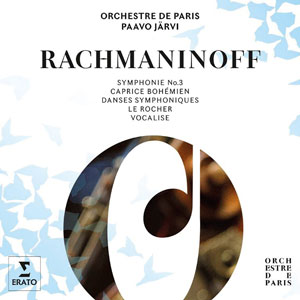
The Top Choice
Orchestre de Paris / Paavo Järvi
(Erato)
Paavo Järvi drives a dramatic narrative without cracking the music’s romantic veneer. Ever light on his feet, he’s a master of rubato, a sprinter with a keen sense of rhythm, an evident lover of the score as much for its balletic exterior as for its spiritual depth. His mastery is complete and the Orchestre de Paris is on top form.
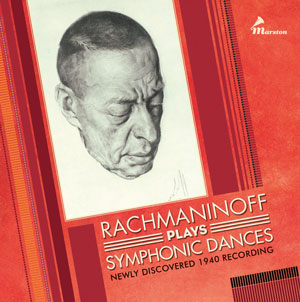
The Historical Choice
New York Philharmonic Symphony Orch / Dimitri Mitropoulos
(Marston)
The composer demonstrates his new score on the piano, then we hear Mitropoulos’s firebrand account of the Dances – a gripping interpretation that Rachmaninov preferred to that of Eugene Ormandy, the work’s dedicatee.
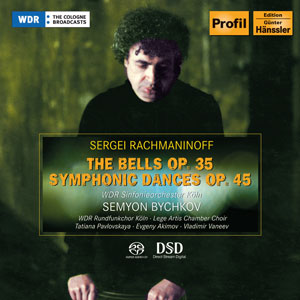
The Darker Choice
WDR Symphony Orch, Cologne / Semyon Bychkov
(Profil)
Bychkov sneaks us back within bleak Russian borders to a land of tolling bells, replete with religious ritual, where dancing is a form of physical prayer. By no means lacking in vitality, Bychkov’s Dances stress the music’s valedictory aspect.
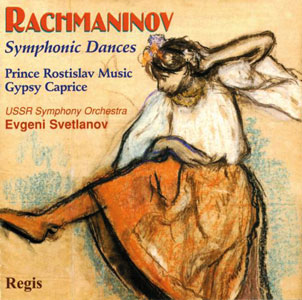
The Wild Card
USSR Symphony Orch / Evgeny Svetlanov
(Regis)
Svetlanov’s live Dances also awaken images of Old Russia. The sound glares occasionally and there’s a noisy audience, but the sum effect transports us to the place where Rachmaninov’s soul still resided when he wrote the piece.
Selected Discography
Recording Date / Artists / Record company (review date)
1942 New York Philh SO / Mitropoulos Marston (10/18)
1960 LSO / Goossens Everest (3/64, 4/95)
1960 Philadelphia Orch / Ormandy Sony Classical (6/93)
1963 Moscow PO / Kondrashin Melodiya; Profil (9/69)
1972 LPO / de Waart Decca Eloquence (1/73, 11/18)
1973 USSR St Academic SO / Svetlanov Melodiya (10/17)
1976 LSO / Previn Warner Classics (9/76, 10/93)
1982 CBSO / Rattle Warner Classics (3/84)
1983 Concertgebouw Orch / Ashkenazy Decca (4/84)
1983 BPO / Maazel DG (3/84)
1986 USSR SO / Svetlanov Regis (5/81)
1990 Philadelphia Orch / Dutoit Decca (4/92)
1990 Moscow St SO / Kogan Alto
1991 Philharmonia Orch / N Järvi Chandos (A/18)
1992 St Petersburg PO / Jansons Warner Classics (12/93)
1993 NDR SO / Gardiner DG (1/96)
1997 Russian Nat Orch / Pletnev DG (7/98)
1998 Russian St SO / Polyansky Chandos (2/00)
2003 LPO / Jurowski LPO (7/05)
2004 Royal Concertgebouw Orch / Jansons RCO Live (2/06)
2004 St Petersburg PO / Temirkanov Warner Classics (A/05)
2006 WDR SO, Cologne / Bychkov Profil (11/07)
2007 Sydney SO / Ashkenazy Exton (4/09)
2008 St Petersburg PO / Temirkanov Signum
2009 LSO / Gergiev LSO (6/12)
2010 BPO / Rattle Warner Classics (10/13)
2011 Orch de Paris / P Järvi Erato (A/15)
2012 Detroit SO / Slatkin Naxos (7/13)
2013 Cologne Gürzenich Orch / Kitaenko Oehms (1/16)
2016 Philharmonia Orch / Ashkenazy Signum (A/18)
2017 Bavarian RSO / Jansons BR-Klassik (4/18)
This article originally appeared in the April 2019 issue of Gramophone. To find out more about subscribing, please visit: magsubscriptions.com








